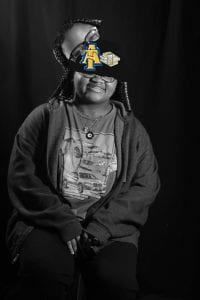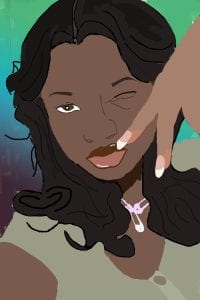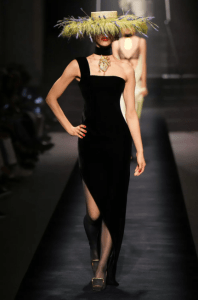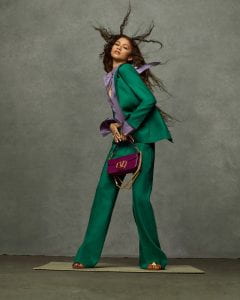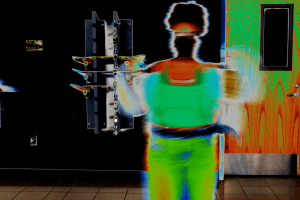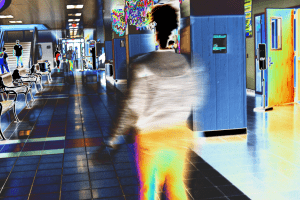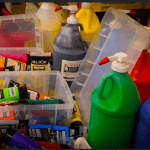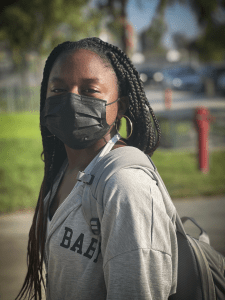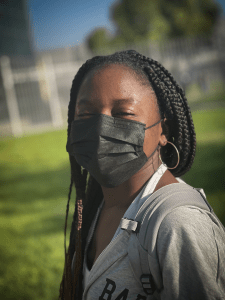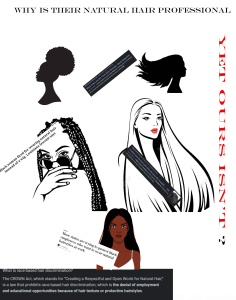Assignments
PHOTO IMAGE TRANSFER ON WOOD/CANVAS
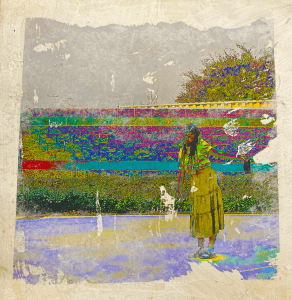
BLACK & WHITE & SHADES OF GRAY
DIGITAL COLLAGE BASED ON A THEME
This is a collage of different David Bowie Eras/Years. I took different pictures from different photoshoots and times in his life to show all the changes he’s had throughout the years. My intent with the viewers is that the can recognize which era he’s in based on the pictures used.
WHATS IN YOUR HEAD
FOOD PHOTOGRAPHY
KINOPTIC ART


SELF PORTRAIT ILLUSTRATION
TOUCH SERIES
LOGO FOR JURUPA HILLS PHOTOGRAPHY PROGRAM
PHOTOGRAPH ELEMENTS OF ART
FASHION/ADVERTISING PHOTOGRAPHY
- Shooting for Mali Pah.
- Shooting for Mali Pah.
- Shooting for Mali Pah.
- I love the black and white and the stance she’s in.
- The coloring is great and she matches the background.
- The outfit is very nice and the blurred background helps you focus on her.
- I like the contrasting color of her outfit.
- I like the contraast on her outfit as well.
DAVID HOCKNEY “JOINERS”
GRADUATION COVER DESIGN
PHOTOMONTAGE: WHERE YOU SEE YOURSELF IN 10 YEARS
In the future my first option is to pursue a career in dance. I’m aiming towards being a choreographer since its a job that’ll last me a long time but in ten years I’ll probably be dancing. I also want to make clothes so if I choose that route I hope my clothes can make it on the runway with high fashion models wearing it. I also like makeup so I’m also interest in cosmetology.
ON LOCATION PORTRAITS or STIL LIFE WITH DOUBLE LIGHTING AND BOUNCED FLASH
VALENTINES DAY CARD
MOTION BLUR
- Coastal areas can be a landscape photographers dream and are great places to capture motion blur.
- Don’t forget that wherever there are people there is movement! So don’t just focus upon the water.
- To get the shot you’re going to probably need a couple of people
- You can either position a camera on or off the moving equipment to get different types of effects.
- If you’re going to experiment with taking photos of bikes one technique to try is slow sync flash which will give the effect of movement while also capturing a split second in time.
KEITH HARING INSPIRED WORK
I really like the color choices made for this picture. I think they have such great contrast and that helps bring the picture more to life. I also like how it says the date and place since it provides good context. I interpret this as someone dancing at a jazz festival and its really unique in the way this was interpreted.
BODY, SHAPE, FORM
BODY, SHAPE, FORM
- Present your opinion of the work’s success or failure.
- The success was the background and scenery of the photo and the failure was the way my hands look
- What qualities of the work make you feel it is a success or failure?
- The way the scenery was captured was successful and it came out nice but the angle I had of my hands didn’t work out the best
- What criteria can you list to help others judge this work?
- If your picture has good composition and texture then that will help your image if it doesn’t have those factors it could be lacking
- Describe how the work makes you think or feel. Support your statement with what in the work leads you to feel those emotion
- It makes me feel calm because this picture was taken sometime around 6 am so the sun is rising and it looks very peaceful.
TED TALK REFLECTION
To him photography was being in the right place at the right time. He wanted to create something different when you press the trigger. He said sometimes perspective is the illusion. Its all about how we interpret it. Its not really what’s realistic but what we think is realistic. He sees it as a puzzle of reality where you take different pieces of reality and put it together.
Its about combining different realities. The things that make our photos look realistic are the little things in our daily lives. He says you need three things to achieve a realistic looking picture. The first rule is that photos combined should have the same perspective. The second thing is the photos should have the same light. The third is being able to make it impossible to distinguish where you pictures start and end.
He thinks is easier to create a piece than find a place. Finding a place may require you to compromise the ideas you’ve created in your mind. Taking these photos requires a lot of planning, because you have to find different locations to mix into one photo. To achieve the result you want it all comes down to planning. He usually starts with a sketch then dives into the planning.
LIGHT PAINTING PORTRAITS
MIXED MEDIA SCREENPRINT ART
BOOKFACE
PHOTO SCREENPRINTING
CREATE A WORK IN THE STYLE OF SANDY SKOGLUND
I think sandy skoglunds work is all about colors. I would consider her a pop art photographer based on her use of color and how that’s the main thing important to her photography. The statues are what really shine through in her photography because usually they’re the opposite color of her background. I like her photography a lot, I find it really unique because I haven’t seen anyone else do what she does. I like how most of her statues in her photography are random things you wouldn’t normally see in the location the photo was taken.
INDEED JOB SEARCH
I fit most of the requirements, the ones that I don’t is the requirement to be 18 + with experience. I would want to do this job because its for JCPennys which seems fun.
-
Video Production Manager
I don’t fit most of these requirements because they require 4-7 years of experience and experience in marketing. I want this job because it pays well and its a job at a university.
-
Adobe Illustrator
I fit most of the requirements because they require you knowing how to use adobe and having photography experience, the ones I don’t require is knowing hw to do social marketing. I want the job because the pays good and It seems easy.
SCAVENGERHUNT
- Trinity
- Trinity
- Trinity
- Trinity
- Trinity
- Trinity
- Sam
- Sam
- Sam
- Sam
- Sam
- Sam
- Anita
- Anita
- Anita
- Anita
- Anita
- Ilana
- Ilana
- Ilana
- Ilana
- Ilana
- Ilana
- Giselle
NATURE/ LANDSCAPE PHOTO WITH PAINTING EXTENSION
MULTIPLE EXPOSURE WITH FLASH AND SLOW SHUTTER SPEED
- Darken the room and position your subject against a black background.
- Turn off all room lights and make your first exposure. Then, without advancing the film, move your subject to the next position for the second exposure. Repeat this procedure for each image you want to record on the film.
- Flash photography, outdoors at night, can produce very underexposed photographs if not taken properly.
- At night a single on-camera flash produces stark lighting, and your subject is flatly lit and the background goes completely black.
- If the necessary flash-to-camera distance is greater than the length of your extension cord, use the open-flash method.
- Do not allow the camera to see the flash unit during the open-flash exposures.
- Now that you have a basic knowledge of photo graphic techniques, it is important that you apply and practice the basic principles.
- Each and every time you pick up a magazine, book, or newspaper or watch TV or see a movie, you are exposed to various composition and lighting techniques.
- Whether using available light or flash photography, notice what results the direction, intensity, and type of light have on your final product.
- Outdoors, flash does not carry very far; therefore, it can be difficult to light objects from a distance; however, this limited coverage also gives you great control.
- Rarely do you find such reflective surfaces outside, so some light is lost.
- To compensate for the light lost, you must open up your aperture when photographing objects at any distance.
- Tests should be conducted before shooting in large, indoor areas, such as gymnasiums and hangar bays or outdoors at night, to determine which flash, camera, and film combination produces optimum results.
- Most electronic flash units have a maximum flash duration (the length of time the light is on) of about 1/800th second, and a minimum flash duration as short as 1/20000th second, thus you can freeze almost any action with the flash.
- Allow enough background area for the number of different exposures you intend to make.
- When you are using a ground glass camera, mark off on the glass, with grease pencil, the areas where the subject should be for each different exposure.
- Set up the electronic flash lights so the minimum amount of illumination falls on the background itself.
- Ghost images can occur when existing light and a slow shutter speed are used in conjunction with electronic flash.
- A ghost image appears as a blur when one image is recorded by the existing light and a second sharp image by the electronic flash.
- Tests should be conducted before shooting in large, indoor areas, such as gymnasiums and hangar bays or outdoors at night, to determine which flash, camera, and film combination produces optimum results.
CREATE A WORK IN THE STYLE OF WASSILY KANDINSKY
SENIOR PORTRAIT SESSION
DSLR CAMER AND LENS PPT
- “Digital Single Lens Reflex”
- Digital cameras that resemble 35mm film cameras
- Mirror system inside lets you preview through the viewfinder the same image that is being captured on film/sensor
- one major way that DSLRs are different from consumer “point and shoot” cameras or phones: detachable lenses
- prime vs. zoom lenses
- kit lens
- prime lens: only one focal length
- zoom lenses: variable focal lengths
- kit lens: a basic lens that comes with a camera body in a “kit,” usually not too expensive
- AF (autofocus) vs. MF (manual focus)
- zoom vs. focus – don’t get them confused
- how to properly focus a zoom lens
- shutter speed: how long the shutter is open
- on the Canon T6i ranges from
30” (seconds) to 1/4000 of a second - choose shutter speed based on situation:
- higher speed to capture fast action
- but what is the tradeoff?
- “Creative Zone”
- P (Program) – camera sets shutter speed and aperture, but you can choose ISO, AF/MF, white balance
- Tv (Shutter Speed priority) – you choose shutter speed, camera chooses appropriate aperture
- Av (Aperture priority) – you choose aperture, camera chooses appropriate shutter speed
- M (Manual) – you choose EVERYTHING
- A-Dep (Automatic depth of field) – camera chooses aperture, shutter speed combo to get best DOF
- Setting the “correct” white balance setting tells the camera how to make your whites and grays neutral, without any color tint
SOCIAL AND POLITICAL ISSUES IN ART
Why do you feel the way you do? Its not fair that black people have to change their natural hair in order to have a job, its not unkept its just a different hair texture.
What might the other side have to say? They might agree with people saying our natural hair is unkept.
Can you see their point of view? No I cant because that ideology stems from racism and what is the beauty standard which doesn’t cater to black people.
What is your reasoning for choosing your stand? Its a problem that needs to be fixed.
Is your artwork intended to offend? Its intended to educate.
Does it get your point across? I put articles in my poster so I think my point is very obvious.
EQUIPMENT BUYING LIST
Mint Camera SLR670-S Classic Instant Film Camera (Brown) – $77900
- Accepts SX-70 and 600 Films
- 116mm f/8 Lens
Canon RF 5.2mm f/2.8 L Dual Fisheye 3D VR Lens – $1,99900
- RF-Mount Lens/Full-Frame Format
- Aperture Range: f/2.8 to f/16
Syrp Genie II 3-Axis Kit – $2,29998
- Genie II Linear Sliding Motor
- Genie II Motorized Pan/Tilt Head
SureFire Bulk Box of 1200 SureFire SF123A Batteries – $1,99900
Linhof Universal Photo Bag – $1,37099
- For Master Technika or Technorama
Spectra Cine 900-BH-C1 Color and Scanning Probe for Spectra Film Gate Photometer II – $3,64895
- 900-BH-C-1 Color and Scanning Probe for Use with the Spectra Film Gate Photometer II
Hasselblad H6D-100c Medium Format DSLR Camera – $32,99500
- 100MP 53.4 x 40.0mm CMOS Sensor
- 16-Bit Color, 15-Stop Dynamic Range
Kodak VISION Color Intermediate Film #5242 (65mm, 2500′ Roll) – $4,79795
- Color Intermediate Film
- High Sharpness for Digital Output
Total: 49,889.87
DOUBLE EXPOSURE
BLOCK PRINTING
READ AND WRITE
Never before has there been such a demand for it. With the rise of social media, a photographer gets to utilize the latest technology in order to further the brand. Working as a freelance photographer allows you
the freedom to dictate everything about your business (your public image, your brand, your calendar, your marketability, your clients). There aren’t many fields that allow you such free rein and so generously.
Being a freelance photographer allows you to play to your strengths, and more often than not, sleep to your desired hours. Some days, your working from home all day, editing images and sending emails, which
brings with it the perks of having your own space, sleeping in, and saving money on travel costs. Other days you have shoots or meetings in potentially any corner of the city, meaning you get to visit and explore
areas of London that you’d never normally have reason to check out. There’s a great balance as on the days that you’re shooting, you’ll likely be working with a team of creatives, and there’ll be anywhere between
5 to 15 of us on a given set. It’s a great chance to converse with other like-minded people.

CUT AND PASTE COLLAGE

MAKE A LOGO FOR YOUR BRAND
TRIPTYCH



- What are aperture, shutter speed and ISO?
- Aperture controls the area over which light can enter your camera. Shutter speed controls the duration of the exposure. ISO speed controls the sensitivity of your camera’s sensor to a given amount of light.
- When would you need to change your ISO?
- The reason you should change your ISO is because you’re targeting a specific shutter speed
- What is aperture and shutter priority settings?
- Aperture Priority lets you choose the aperture setting you want, but the camera chooses the shutter speed. Shutter Priority lets you choose the shutter speed you want, but the camera chooses the aperture setting.
- What are AF modes how do you change them?
- Autofocus is the function of a camera to automatically focus on a subject. Most brands have a button on the lens and the camera body to switch between AF and MF mode.
- Why do your need to meter the light to get the right exposure?
- Because it won’t be fooled by subject reflectivity.
- What is white balance and why would you need to change it?
- White balance is used to adjust colors to match the color of the light source so that white objects appear white. If it is set incorrectly, it can either make the image look too cool (more blue), or too warn (more orange).
- What is depth of field and what is the difference between shallow and good?
- Depth of field is the area of acceptable sharpness in front of and behind the subject which the lens is focused. A shallow depth of field refers to a small area in focus. A deep depth of field captures a larger area in focus, often keeping everything in the image sharp and clear.
- What are drive modes and metering modes?
- Drive Modes are the shooting modes in your camera, such as single shooting, continuous shooting, self-timer mode and more. Metering describes the process of how your camera decides to assign the right shutter speed and aperture based on the amount of light the camera can pick up.
- What is exposure compensation?
- Exposure bracketing is when a photographer creates pictures with different exposure settings.






